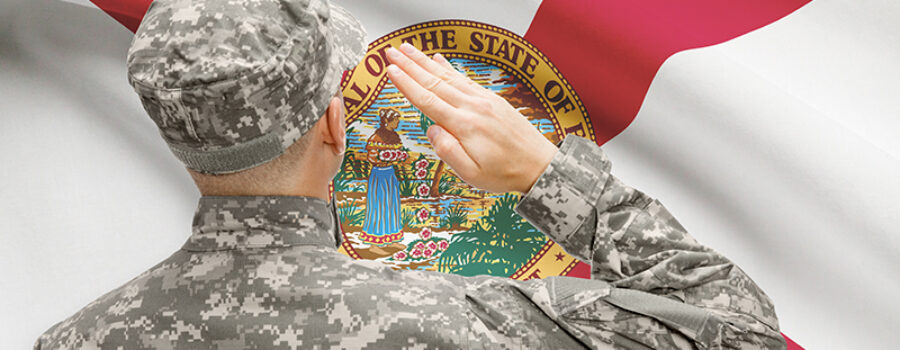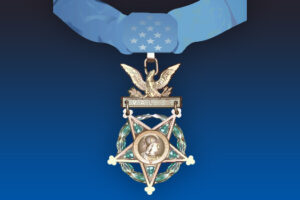Florida was founded in March 3, 1845 the sunshine state hosts a number of important military bases across the state. The military bases in Florida play an important role in national defense due to the states Atlantic coast line and Gulf of Mexico coast line.
Map of Military Bases in Florida
Camp Blanding
Camp Blanding was originally a Naval Air Station that was built on Lake Kingsley in the 1930s. Although at that time the Navy wanted an air station on the St. James River, they had to settle for the Lake Kingsley location because the National Guard already had a base on the St. James River. After negotiations, the two branches decided to trade land, and the National Guard took over the land on Lake Kingsley. They named it Camp Blanding after Lieutenant General Albert H. Blanding, a Florida native who fought in the Mexican Border War. Throughout its history, it has been used as training camp, and during World War II, it was used to house German prisoners of war.
Today, several organizations still use the camp for training. Some of those organizations include the Florida National Guard, the Florida Army National Guard, the Florida Air National Guard, Army and Air Force Civil Support teams, Florida National Guard Special Forces, Florida law enforcement groups, and ROTC units from Jacksonville University and the University of South Florida.
Elgin Air Force Base
The Elgin Air Force Base was established in 1935 and was originally the Valparaiso Bombing and Gunnery Base. It was used as a training facility, munitions center, and staging area, and was renamed after World War II ended. During the Cold War, it developed, handled, and tested missiles, and became the center of missile development technology.
Today, the Elgin Air Force Base’s main mission is to develop and test sustainable weapons for the Air Force. They also focus on the Air Force navigation systems and ensure that they are up-to-date and accurate. Elgin Air Force Base is the home of the Hurlburt Field. Although the Hurlburt Field has its own missions, it shares housing, troops, equipment, and supplies with the Elgin Air Force Base.
MacDill Air Force Base
In 1939, the Southeast Air Base was established as an Army Air Corps Base. Soon, the base was renamed the MacDill Field, after Colonel Leslie MacDill, an Army pilot who was killed in World War I. During World War II, the units stationed at MacDill Field, the 44th and 29th Bomber Groups, played a key role in missions and operations in Europe. Towards the end of World War II, the Army handed control of the base over to the Navy, and after World War II, the airfield was transferred yet again, this time to the Air Force.
During the 1990s, civilians in neighborhoods near the MacDill Air Force Base complained that the base was noisy, and the Base Realignment and Closure Commission threatened to close it down. To remedy the noise, the base shut down training operations on the base. In 2005, MacDill Air Force Base faced closure again but ultimately stayed active. Today, MacDill Air Force Base is a key base in fighting terrorism.
Patrick Air Force Base
Patrick Air Force Base was originally a Naval Air Station called Banana River. During World War II, the NAS Banana River was an air patrol operations center. After the war, in 1948, the Air Force took control of the base. In the 1960s and 70s, the base was used for space exploration programs. Today, Patrick Air Force Base is used for a number of missions including Space Launch Operations Support, Easter Range Operations, and Expeditionary Readiness. The base is home to the 45th Space Wing, whose operations include launching rockets.
Tyndall Air Force Base
The Tyndall Air Force Base was built in 1941 and was named after Lieutenant Frank B. Tyndall, a local Floridian who died on active duty. When the base was first established, it was used as a live-fire training center that specialized in aerial gunnery. After World War II, the base was inactivated but was opened again shortly after when the Air Force took over operations. The Air Force established an Air Training Command Center and used it as a training school for new pilots.
Today, the base is used by the North Atlantic Treaty Organization for training. It is also the home of the Air Force Civil Engineer Support Agency and the Air Force Research Laboratory.
Corry Station NTTC
The Corry Station Naval Technical Training Center (NTTC) was originally built in 1923, and in 1928, it was relocated to Pensacola, Florida. The base is named in honor of Lieutenant Commander William M. Corry, Jr., who received the Medal of Honor in 1920. The base was used as a flight training center for fighter pilots. In 1960, the main mission changed and the base began to focus more on communications, specifically cryptology.
The Corry Station NTTC is currently the home of the Navy’s Center for Information Dominance (CID). According to the CID website, it is an organization that “leads, manages and delivers Navy and joint force training in Intelligence, Information Warfare, Cryptology and Information Technology.” The main mission of the CID is to prepare and train troops in sea forces to protect the waters and coasts surrounding the United States.
NAS Jacksonville
Naval Air Station Jacksonville was built in 1917, and when it opened, it was one of the largest bases of its time with over 600 buildings and one of the most important rifle ranges. Although it was deactivated after the war, it was reactivated in 1928, and the Marines took over control of the operations on the base. The base was used to train pilots for World War II, and it was also a prisoner-of-war camp for German soldiers. The base saw a lot of expansion during the 1960s, and the Marines left the base by the late 1980s. Today, the main mission of NAS Jacksonville is to train pilots. In addition to flight training, troops are trained on technologies and techniques of anti-submarine warfare.
NAS Key West
The Navy first established a port in Key West in 1832 for anti-piracy efforts. Throughout the Mexican-American War, the Spanish-American War, and World War I, the base grew, and it supplied oil to U.S. fleets while stopping German forces from getting to the Mexican oil supplies. By World War II, the base had become a bona fide Naval Air Station, and grew yet again to accommodate more ships and aircrafts.
During the 1960s and 70s, the base was a key site for helicopter, airborne, and antisubmarine training. Today, NAS Key West is still used for naval training and anti drug smuggling operations. In addition to these missions, the base focuses on engineering, surveillance, weather, and marine research.
NS Mayport
The Naval Station Mayport was established in 1942 and had a rugged history of deactivations and reactivations until 1973 when Spirit of 76, also known as Air Force One, arrived at the base. President Nixon went to the base to visit his son-in-law at one point, and his presence on the base made it one of the most famous bases in the country for years to come. Today, the NS Mayport is home to many units, the most notable of which are the Vipers, Jaguars, Airwolves, and Grandmasters, four naval aircraft squadrons.
Naval Air Warfare Center Training System Division Orlando
The Naval Air Warfare Center Training System Division was established in 1941. In the beginning, the base used synthetic devices for readiness training. While it was originally stationed in Long Island New York, the base moved to Orlando, Florida, in the 1960s, and it has been there ever since. In the 1990s, the base was used for air warfare training and the development of undersea and surface operation training, and it remains the key mission of the base today.
NSA Panama City
The Naval Support Activity Panama City was established in 1945 and has an uncertain history. No one really knows what the point of building the base was, and the NSA Panama City didn’t play a role in either World Wars. Today, the mission of the NSA Panama City is to prepare and ensure readiness in case of a national emergency and to support the operations of the Department of Defense.
NAS Pensacola
The Naval Air Station Pensacola was established in 1826, and it spent its time patrolling pirate and slave-trading ships. During World War I, the base was the only Naval Air Station in the United States, and there were only a few trained pilots on the base. However, the base worked hard during the war, and by the end, it boasted several thousand pilots ready for combat. It continued to train pilots through World War II.
Today, the base is used to train military surgeons and psychologists, in addition to completing naval flight missions. The base is home to a museum, a national park, a historic site, and a cemetery.
NAS Whiting Field
The Naval Air Station Whiting Field was established in 1943 and named in honor of Kenneth Whiting, a naval pilot who fought in World War I and World War II. During World War II, the base was used to house prisoners-of-war. After the war, the base became the home of the Blue Angels, a renowned Navy flight squadron.
The NAS Whiting Field is operated by the Navy, but all branches of the armed forces use it as a center for training professional pilots. While T-34 aircrafts were used on the base in the past, they have recently been phased out and replaced by T-6B. The NAS Whiting Field is the busiest base in the United States with over 1.5 million flights coming in or going out from the base a year.
MCSF Blount Island
The Marine Corps Support Facility Blount Island was established in 1983 as a Maritime Preposition Force installation. The main mission of the units stationed at MCSF Blount Island is to support marine expeditionary operations, and make sure they are always ready for combat by keeping their equipment, weapons, and vehicles in perfect order.
Coast Guard Stations in Florida
Florida is home to 28 Coast Guard Stations, 26 of which are located in the seventh district, and 2 of which are in the eighth district. 17 of those stations are still active. There were 5 stations that opened in 1876, including the Biscayne Bay House of Refuge, the Fort Lauderdale House of Refuge, the Gilbert’s Bar House of Refuge, the Indian River House of Refuge, and the Orange Grove House of Refuge. The most recent established Coast Guard Station was the Station Destin, which opened in 1977.





Leave a Reply
We value your privacy. Your email is safe with us.